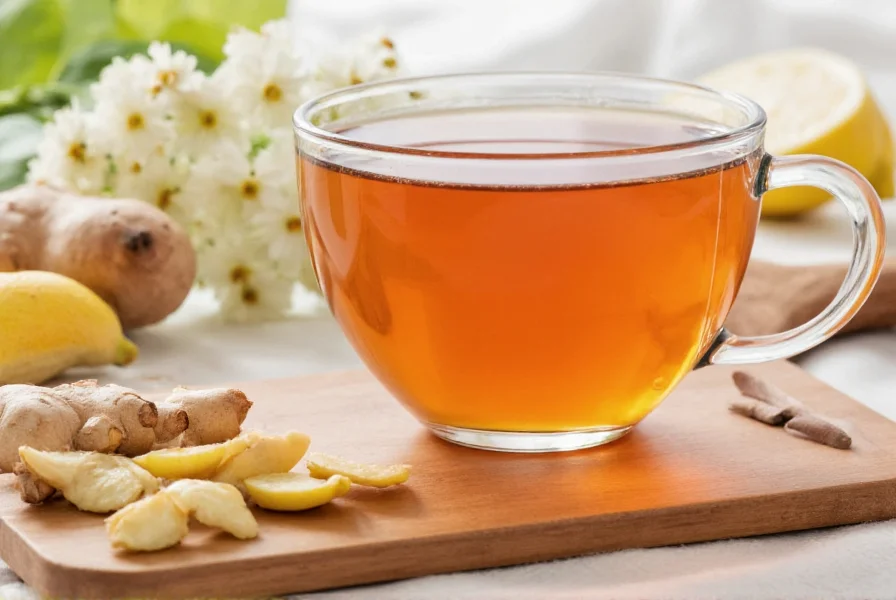When constipation strikes, many turn to natural remedies like ginger tea for relief. This centuries-old beverage has gained popularity as a potential digestive aid, but understanding its actual effectiveness requires examining both traditional use and modern scientific evidence.
How Ginger Tea May Support Digestive Health
Ginger contains bioactive compounds, primarily gingerols and shogaols, which research suggests can positively influence digestive processes. A 2020 review published in Nutrients highlighted ginger's potential to accelerate gastric emptying and stimulate intestinal contractions. These mechanisms may help move stool through the digestive tract more efficiently.
The warming properties of ginger tea can increase blood flow to the digestive organs, potentially enhancing their function. Unlike harsh laxatives that can cause dependency, ginger works more gently by supporting your body's natural digestive processes. This makes natural constipation relief with ginger tea appealing for those seeking mild, non-pharmaceutical options.
Preparing Effective Ginger Tea for Constipation
Not all ginger teas deliver equal benefits. For maximum digestive support:
- Use fresh ginger root rather than pre-packaged tea bags when possible
- Peel and slice 1-2 inches of ginger root
- Simmer in 2 cups of water for 15-20 minutes (longer simmering extracts more active compounds)
- Add lemon juice to enhance absorption of ginger's beneficial compounds
- Avoid excessive sugar which can counteract digestive benefits
For those exploring how to make ginger tea for constipation relief, this preparation method maximizes the concentration of gingerols. Drink 1-2 cups daily, preferably between meals, to avoid interfering with nutrient absorption.

What Research Says About Ginger and Constipation
A 2019 clinical trial in the Journal of Ethnopharmacology found that participants who consumed ginger extract experienced improved bowel movement frequency compared to placebo. However, researchers noted that ginger worked best as part of a comprehensive approach that included adequate hydration and dietary fiber.
It's important to understand that ginger tea's effectiveness varies based on:
| Factor | Impact on Effectiveness |
|---|---|
| Constipation cause | More effective for functional constipation than medication-induced |
| Hydration level | Requires adequate water intake to work properly |
| Dietary fiber | Works best when combined with sufficient fiber |
| Individual physiology | Responses vary significantly between people |
When Ginger Tea Might Not Be Appropriate
While generally safe, ginger tea isn't suitable for everyone experiencing constipation. Those with certain conditions should exercise caution:
- Individuals taking blood thinners (ginger has mild anticoagulant properties)
- People with gallstone disease (ginger may increase bile production)
- Those experiencing severe abdominal pain (could indicate serious condition)
- Pregnant women beyond first trimester (consult physician first)
If you're researching ginger tea safety for constipation relief, remember that while ginger is generally recognized as safe by the FDA, it can interact with certain medications. Always consult your healthcare provider before using ginger tea as a remedy if you have underlying health conditions or take prescription medications.
Complementary Natural Approaches
For optimal results, consider combining ginger tea with other evidence-based natural remedies:
- Hydration: Drink 8-10 glasses of water daily alongside ginger tea
- Dietary fiber: Include 25-30g of fiber from fruits, vegetables, and whole grains
- Physical activity: 30 minutes of moderate exercise daily improves gut motility
- Prune combination: Add prune juice to ginger tea for enhanced effect
This multi-faceted approach addresses natural constipation solutions beyond ginger tea and typically yields better results than relying on a single remedy.

When to Seek Medical Advice
While occasional constipation is common, certain symptoms warrant professional evaluation:
- Constipation lasting more than 3 weeks despite home remedies
- Severe abdominal pain accompanying constipation
- Blood in stool
- Unintentional weight loss
- Constipation alternating with diarrhea
These could indicate underlying conditions that require medical treatment rather than home remedies. Your healthcare provider can determine if your constipation falls under chronic constipation requiring professional treatment rather than responding to natural approaches.
Practical Tips for Using Ginger Tea Effectively
For those incorporating ginger tea into their digestive health routine, consider these evidence-based tips:
- Drink ginger tea 20-30 minutes before meals to stimulate digestive enzymes
- Use warm (not hot) water for brewing to preserve delicate compounds
- Combine with peppermint for enhanced soothing effects on the digestive tract
- Track your bowel movements to assess effectiveness objectively
- Be patient—results may take 2-3 days of consistent use
Understanding optimal timing for ginger tea consumption for constipation can significantly improve its effectiveness as part of your digestive wellness routine.











 浙公网安备
33010002000092号
浙公网安备
33010002000092号 浙B2-20120091-4
浙B2-20120091-4